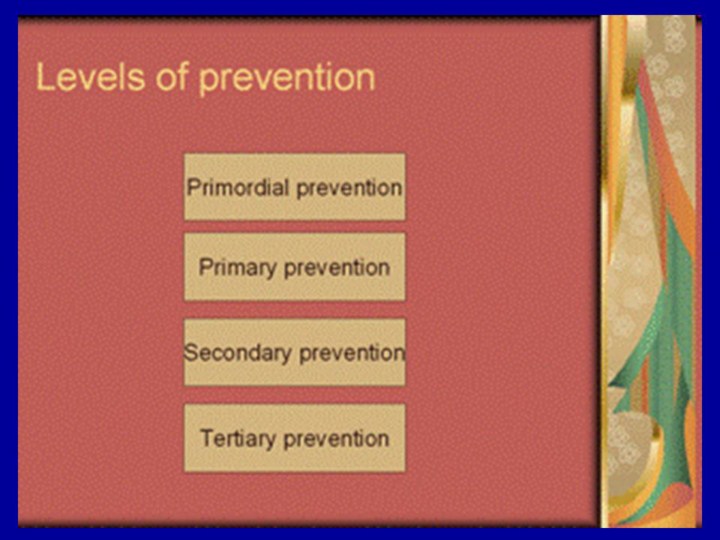Search for most updated materials ↑
| front |1 |2 |3 |4 |5 |6 |7 |8 |9 |10 |11 |12 |13 |14 |15 |16 |17 |18 |19 |20 |21 |22 |23 |24 |25 |26 |27 |28 |29 |30 |31 |32 |33 |review |
 |
http://www.pitt.edu/~super1/lecture/lec32311/008.htm
Primordial prevention describes efforts to reduce the onset of the risk factors known to predispose people to certain diseases. Primary prevention includes efforts to control the underlying cause or condition that results in disability. Examples include (a) maternal antiretroviral therapy to reduce the risk of mother-to-child transmission of HIV and (b) fortification of the food supply to prevent birth defects such as spina bifida and iodine deficiency disorders. Secondary prevention aims at preventing an existing illness or injury from progressing to long-term disability. Examples include newborn screening for metabolic disorders followed by dietary restrictions to prevent damage to the nervous system and effective emergency medical care for head injury. Tertiary prevention refers to rehabilitation and special educational services to mitigate disability and improve functional and participatory or social outcomes once disability has occurred.
|